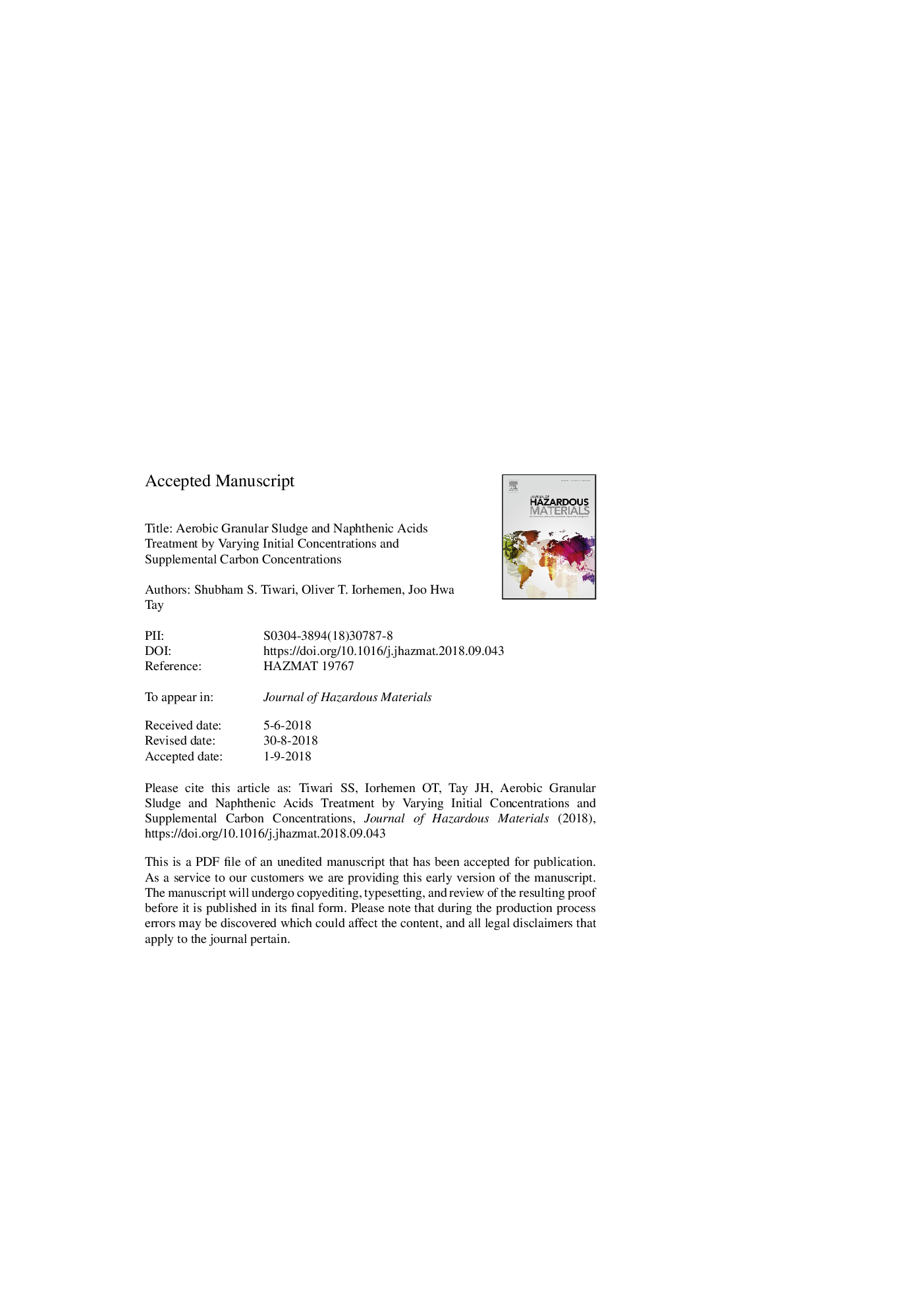| Article ID | Journal | Published Year | Pages | File Type |
|---|---|---|---|---|
| 10151710 | Journal of Hazardous Materials | 2019 | 24 Pages |
Abstract
Aerobic granular sludge (AGS) has previously been utilized in the treatment of toxic compounds due to its diverse and dense microbial structure. The present study subjected mature AGS to model naphthenic acids (NAs) representative of the Canadian oil sands. To this effect, three NA concentrations (10, 50 and 100âmg/L) and three supplemental carbon source concentrations (600, 1200 and 2500âmg/L) were studied in batch reactors for 5 days. The responding variables were chemical oxygen demand (COD), NA concentrations and nutrients. Cyclohexane carboxylic acid (CHCA), cyclohexane acetic acid (CHAA) and 1-adamantane carboxylic acid (ACA) were chosen to study structure-based degradation kinetics. The optimal COD according to the runs was 1200âmg/L. CHCA was removed completely with biodegradation rate constants increasing with lower NA concentrations and lower COD concentrations. CHAA was also removed completely, however, an optimal rate constant of 1.9 dâ1 was achieved at NA and COD concentrations of 50âmg/L and 1200âmg/L, respectively. ACA removal trends did not follow statistically significant regressions; however, degradation and sorption helped remove ACA up to 19.9%. Pseudomonas, Acinetobacter, Hyphomonas and Brevundimonas spp. increased over time, indicating increased AGS adaptability to NAs.
Keywords
DCMOSPWgas chromatograph–mass spectrometerEC50BSTFAAGSMLVSSSBRMLSSACAOLREPSPBS50% effective concentrationSVIGC–MSCHCAchemical oxygen demandDichloromethaneSequencing batch reactorSludge volume indexPhosphate buffered salineAerobic granular sludgeOil sands process-affected watermixed liquor suspended solidsmixed liquor volatile suspended solidsExtracellular polymeric substancesOrganic loading rateMolecular weightCod
Related Topics
Physical Sciences and Engineering
Chemical Engineering
Chemical Health and Safety
Authors
Shubham S. Tiwari, Oliver T. Iorhemen, Joo Hwa Tay,
